Thursday 30 April 2015
Wednesday 29 April 2015
8 Facts You Have To Know About The Indian Constitution
Posted by
ER. RAVI KUMAR (R.K.C)
1. The Indian Constitution is the longest in the world.
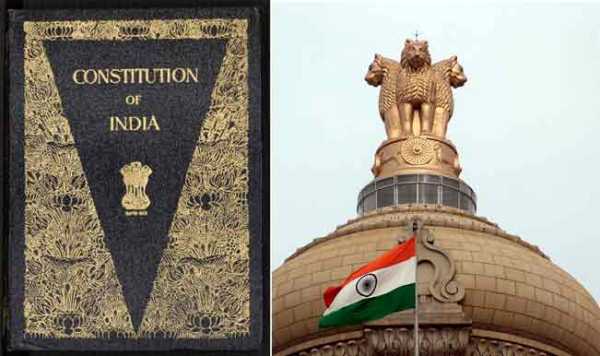
It has 444 articles, 12 schedules and 94 amendments. On the other hand, the American constitution is the shortest.
2. It took nearly 3 years to draft the Indian Constitution.
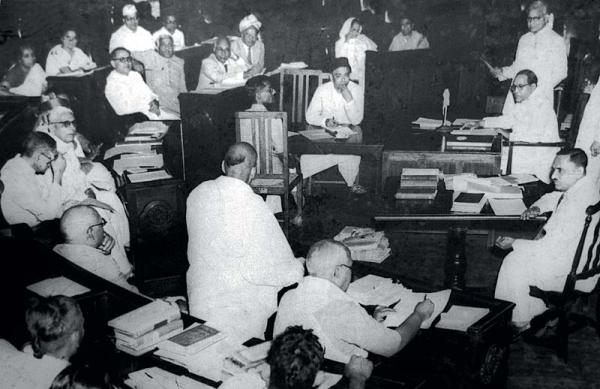
The Constituent Assembly had 284 members, out of which 15 were women. The Drafting Committee submitted the draft, after which they took three more years to complete it.
3. The Constitution of India was handwritten and calligraphed both in English and Hindi.

It wasn't typed or printed. The original copies are kept safely inside helium-filled cases in the library of the Parliament of India.
4. The Indian Constitution is called the bag of borrowings.
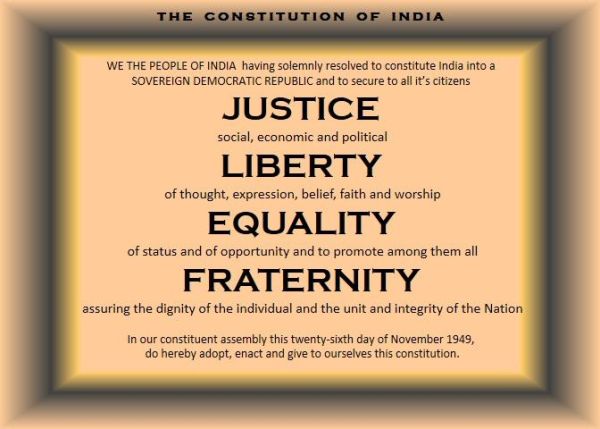
The Indian Constitution has taken various features from other constitutions. The concepts of liberty, equality and fraternity were taken from the French Constitution. The idea of 5 year plans was taken from the USSR and the concept of socio-economic rights was taken from Ireland. Most importantly, the law on which the Supreme Court works was taken from Japan. There are many other concepts that have been borrowed from other countries.
5. The Indian Constitution came into force on January 26, 1950.
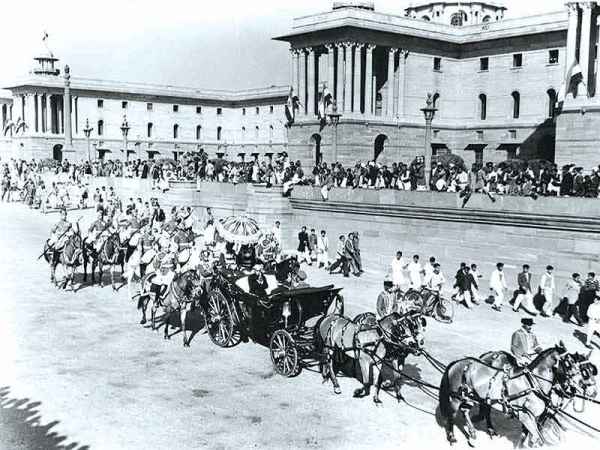
284 members of the Constituent Assembly signed the handwritten documents on January 24, 1950. Two days after, on 26th January, India celebrated its first Republic Day.
6. Our Republic day is celebrated for 3 days.
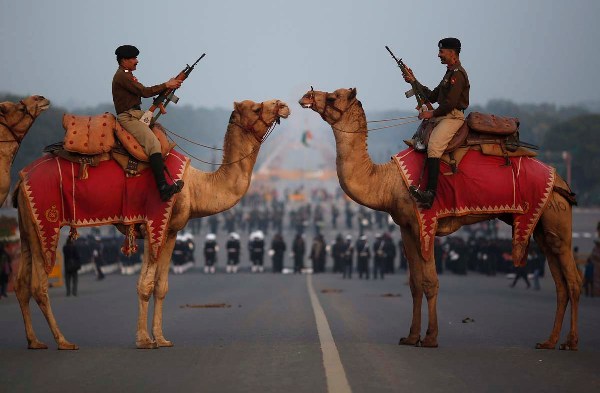
Beating the retreat marks the end of the celebration on January 29.
7. The national emblem of India was adopted on January 26, 1950.
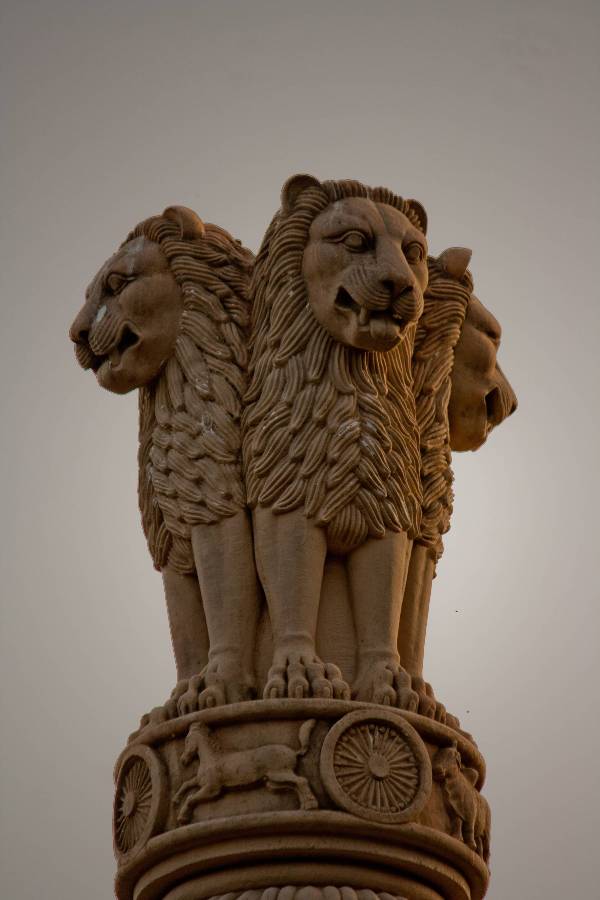
The national emblem of India is an adapted version of the Sarnath Lion of Ashoka.
8. B.R. Ambedkar had a major role to play in the formulation of the Indian Constitution.
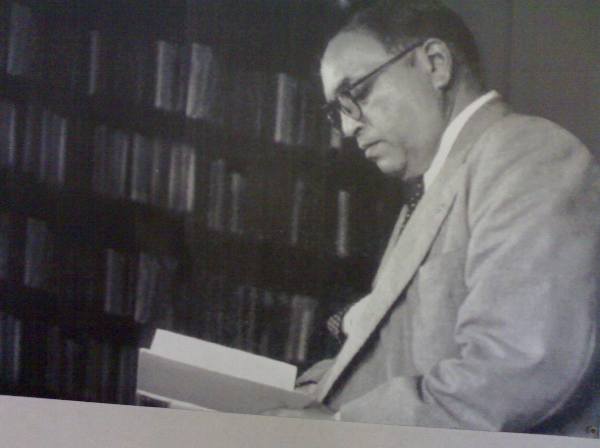
Ambedkar was the chief architect of our constitution. It is because of him that our constitution covers a wide range of civil liberties including the freedom of religion and the abolition of untouchability.
CSAT General Studies Paper 1 Syllabus
Posted by
ER. RAVI KUMAR (R.K.C)
CSAT Paper I: 200 Marks; Duration: Two Hours; Number of Questions: 100
- Current Affairs: Events of national and international importance
- History of India and Indian National Movement
- Indian and World Geography - Physical, Social, Economic geography of India and the World.
- Indian Polity and Governance – Constitution, Political System, Panchayati Raj, Public Policy, Rights Issues, etc.
- Economic and Social Development – Sustainable Development, Poverty, Inclusion, Demographics, Social Sector Initiatives, etc.
- General issues on Environmental Ecology, Bio-diversity and Climate Change (no subject specialization required)
- General Science
CSAT Paper I Analysis
| Topic | 2011 | 2012 | 2013 | 2014 |
| History and Culture | 13 | 20 | 15 | 21 |
| Economy | 18 | 12 | 18 | 6 |
| Polity | 17 | 25 | 18 | 13 |
| Geography | 11 | 11 | 14 | 15 |
| Environment & Bio-diversity | 22 | 23 | 22 | 21 |
| Science & Technology | 19 | 9 | 13 | 17 |
| Current Affairs | 7 | |||
| Total | 100 | 100 | 100 | 100 |
CSAT General Ability Test Paper 2 Syllabus
CSAT Paper II: 200 Marks; Duration: Two Hours; Number of Questions: 80
- Comprehension
- Interpersonal skills including communication skills
- Logical reasoning and analytical ability
- Decision making and problem solving
- General mental ability
- Basic numeracy (numbers and their relations, orders of magnitude etc.) (Class X level), Data Interpretation (charts, graphs, tables, data sufficiency etc. - Class X level)
- English Language Comprehension skills (Class X level).
- Questions relating to English Language Comprehension skills of Class X level. (will be tested through passages from English language only without providing Hindi translation)
Marking Scheme: Total 80 questions have 200 marks, thus each question is of 2.5 marks. There is a negative marking of 33% or 0.83 marks. Decision making section doesn't have any negative marking.
CSAT Paper II Analysis
| Topic | 2011 | 2012 | 2013 | 2014 |
| Basic Numeracy | 13 | 3 | 19 | 19 |
| General Mental Ability | 15 | 16 | 12 | 7 |
| Decision Making & Problem Solving | 6 | 7 | 6 | 0 |
| Analytical Ability & Logical Reasoning | 10 | 14 | 12 | 22 |
| Comprehension (Both English & Hindi) | 27 | 32 | 23 | 26 |
| English Language Comprehension Skills | 9 | 8 | 8 | 6 |
| Total | 80 | 80 | 80 | 80 |
Tuesday 28 April 2015
UPSC Civil Services Exam 2013 Topper (Rank 1) Gaurav Agrawal’s Marks
Posted by
ER. RAVI KUMAR (R.K.C)
Gaurav Agrawal from Rajastan topped UPSC Civil Services Exam 2013. Gaurav did his graduation from IIT and post graduation from IIM. He got IPS in his first chance before securing All India Rank 1 this year. We have already shared Gaurav Agrawal’s UPSC interview transcript. In this post, we shall analyze how should one score to become an All India Topper and clear IAS! This post also examines the subjective nature in the present pattern of UPSC exam, especially the interview/personality test.
How well should you score to clear IAS with AIR 1?
As you all might be aware, there cannot be any generalizations. We have already done an analysis on UPSC mains marks cut-offs and have shown that the competition is getting tougher and the mains exam is becoming low scoring. Let’s have a quick look at AIR 1, Gaurav Agrawal’s total marks, which is 975/2025. This comes around 48.15 percentage, around 3 percent less than last year topper Haritha V. Kumar’s total. The decrease in percentage can be attributed to the reduction in number of optional papers and increase in general studies papers, with tight valuation. But the point here is : You just need around 48% marks to become All India Topper! And to clear IAS which has around 180 seats this year including reservation, the percentage needed is again less! However, things are not that easy! Let’s see.
Gaurav Agrawal’s UPSC Civil Services Preliminary Exam Marks

- General Studies Paper 1 (GS): 121.34 / 200
- General Studies Paper 2 (CSAT): 182.50 / 200
- Total: 304 / 400
PS : Marks of UPSC Preliminary Exam is not counted for final ranking. For 2013, the cut-off mark for general category was 241, OBC – 222, SC -207, ST-201, PH1 -199, PH2 – 184 and PH3 – 163.
It can be seen that Gaurav was way above the cut-off, even for Prelims. A high score in CSAT, can naturally be attributed to his IIT+IIM brain, but the score of 120+ in GS shows his command over the general studies paper too.
A good command over GS paper even at the time of Prelims would naturally give an edge to the candidate for Mains, as he/she already know many of the general studies topics. And a 300+ score for Prelims is just awesome! 
Motivational quote from the topper for those who start late:
If you are confident enough in paper 2 (CSAT) , prelims specific preparation can be done in last 1-2 months itself.
Gaurav Agrawal’s UPSC Civil Services Mains Exam Marks
Thanks to Gaurav for sharing his detailed marks-break up.
- Essay: 135 / 250
- GS 1: 85 / 250
- GS 2: 63 / 250
- GS 3: 88 / 250
- GS 4: 102 / 250
- Economics 1: 134 / 250
- Economics 2: 162 / 250
- Total GS: 338 / 1000 (33.8%)
- Total Economics Optional : 296 / 500 (59.2%)
- Mains (written) total = 769 / 1750 (43.94%)
PS : Mains cut-off for general category was 564, and Gaurav had scored 205 marks above that minimum qualifying mark. 
Gaurav Agrawal’s UPSC Civil Services Mains Exam Marks
- Interview (Dr. Kilemsungla board): 206 / 275
- Total: 975 / 2025
- Rank 1.
PS : After interview, Gaurav was 200 marks above the last recommended candidate in general category. (517th candidate)
All India Topper’s Mark for Mains and Interview : An Analysis
As per our analysis, there are three crucial areas which determines a mains qualified candidate his/her final rank, after the changed pattern.
- Essay Paper (250 marks).
- Optional Paper (500 marks).
- Interview (275 marks.)
You might be surprised why we didn’t include General Studies Paper in this list. Of-course, General Studies is also a factor, but in 2013, it was not a very crucial element, as there was no very big difference in the mark range even when the total General Studies weigtage was out of 1000 marks. Reason : GS1, GS2 and G3 papers had 25 questions each while GS4 had 14 questions. So the 1000 marks were divided among 89 main questions and 20+ sub questions. That will reduce the subjective elements and variations to a great extent. Analyze this break-up, in contrast to a single essay question worth 250 marks!
Subjectivity in the Essay Paper
Gaurav Agrawal scored 135 in essay paper, which is a very high score for essay this year. Yes, there are candidates who scored, 145 for essay, but the difference between the 145 and 135 is not that really big. But those who got only 50 or 60 mark in essay, are lagging behind the topper by near 80+ marks soon after the first paper itself! This is not a small difference to neglect. A single essay worth 250 marks can always lead to mark variations like this. Unless the next year essay paper contains 2-3 essays, the volatility of essay marks will remain.
Subjectivity in the Optional Paper
Gaurav Scored 296 marks in economics optional which is exceptional! Here also, there might be other candidates who scored higher for other optionals, but 296/500 is never a mean achievement. Gaurav said that it was his optional marks which secured him the first rank. We would only partly agree. He performed really well across sections  .
.
But again, who much is the marks range in optional paper? If Gaurav’s total was 296/500, there are also candidates who made it to the final list with less than 180/500 as optional paper mark. That means a big difference of 120+ marks is possible for optionals.
PS : The wide variation of marks between optional papers is well known. This has nothing to do with number of questions in each paper, but is often associated with the scaling process for equating marks between different optional papers. There are also unfortunate candidates with such low marks 3-11 in certain optional papers, after writing for 3 hour each (who of-course didn’t qualify) probably due to the scaling process for that optional paper!
Subjectivity in the UPSC Interview/Personality Test
Now let’s see how a candidate’s life and years of preparation can be drastically ruined in half an hour. For 2013 interview, there were as high marks as 210+ and low marks as 90 also. This means 120+ marks difference was possible in 30 minutes, which as per our analysis is the most life changing one. Even if you were 120+ marks above mains cut-off (mains = the stage which checks your knowledge and analytical abilities, with a weightage of 1750 marks ), a very low mark like 90 or less in the UPSC interview/personality test can spoil your chances.
PS : There are many instances of candidates securing very low marks like 90 or 100 one year crossing 200+ when he attends the UPSC board next year. It can be the reverse also. There are many who wonder how the personality of a candidate rise or fall so much in one year. This just point outs the subjectivity in a 30 minute interview. There are many who wonder if the personality of candidate can be judged at all in 30 minutes.
Gaurav scored 206 for interview, which is again very high marks. His GS score of 338/1000, though not exceptional, corresponds to around 85 marks per each paper out of 250, which is well above the average.
Conclusion :
To conclude our analysis on UPSC Civil Services mains+interview, it is worrysome to note that the high range of marks existing in a 20-30 minute subjective process like interview. The subjective nature also exists in the valuation of a single essay worth 250 marks. Again, scaling in optional papers has been a matter of debate by lot of unfortunate candidates for many years. UPSC had made some reforms in exam pattern and syllabus in last 2-3 years, but still there is definite scope for improvement in the whole exam process, and we strongly suggest reducing the ‘range of marks’ that can be awarded for interview and essay. The difference between top and bottom marks should be a maximum 50. Except under exceptional circumstances, this rule should not be violated. Either remove the optional paper completely or bring more transparency to the scaling process for optional paper. Many successful and unsuccessful candidates associate the ‘luck element’ with the subjective and impulsive nature of awarding marks. The selection of the top bureaucrats who steer the governance and future of India, can never be left to any luck element, but should always be on the basis of merit.
And for Gaurav Agrawal, a consistent high scoring in all papers of mains and interview fetched him the top slot. He might not be the topper in individual papers, but he remained consistently high across all papers with exceptional performance in Economics optional. We are happy that his hard-work is finally rewarded, in-spite of the uncertainties existing in the system and exam process. A truly deserving candidate who crossed all hurdles, after being a little short the first time. All the very best to him! 
Monday 27 April 2015
Saturday 25 April 2015
Friday 24 April 2015
Wednesday 22 April 2015
Saturday 18 April 2015
Friday 17 April 2015
Tuesday 14 April 2015
Sunday 5 April 2015
10 Amazingly Dedicated Indian Civil Servants You Will Be Proud To Know
Posted by
ER. RAVI KUMAR (R.K.C)
With the sudden demise of the beloved bureaucrat D.K. Ravi, the entire country is in state of shock and is wondering whether there is a place for an honest and dedicated man like him in India. As we continue to grieve this huge loss to the nation, here are 10 other such amazing bureaucrats we wish to salute, who have been doing amazing work like Ravi and giving us hope that even a few good men can change the course of a nation
1. Narendra Kumar
IPS Narendra Kumar started his career in Bihar in 2009, and since then he had shown great courage and commitment towards his work and then he joined office in Morena, Madhya Pradesh. He was famous for his active work in trying to stop illegally mined stones and spent a large amount of time in fighting the mining mafia. In 2012, this brave officer was allegedly killed by the members of the same mining mafia at the young age of 30. When he saw a tractor carrying illegally mined stones, he tried to stop it, and when the driver did not slow down, he stood in front of it to bring it to a halt. But the driver did not stop and ran over Kumar, crushing him to death. His wife is an IAS officer in Gwalior.
2. Ajit Doval
Doval is already a known name and is famous for his commendable work during his tenure as an IPS officer from the batch of 1968. He played an active role in insurgencies operations in Mizoram, Punjab and Kashmir. He managed to turn militants and persuade them to assist Indian forces against the terrorists. Along with his exceptional work in these states, he has done a commendable job in the termination of all 15 hijackings of Indian Airlines aircraft from 1971-1999. He also stayed in Pakistan as an undercover agent in a high-risk assignment. He later joined the intelligence bureau and is currently holding the position of National Security Advicer to PM Narendra Modi.
3. B. Chandrakala
This feisty District Magistrate of Bulandhshahar is famous for taking tough stands against illegal practices. She has always spoken against corrupt officers and even got transferred from her earlier posting because she refused to accept the wrong doings going on. She never hesitates in publicly exposing those people who are not doing justice to their jobs. Thanks to her intervention, three corrupt contractors were booked, one of them being the brother of a member of the ruling Samajwadi Party in Uttar Pradesh.
4. Satyendra Dubey
Another name that stands out for commendable dedication and work ethics is Satyendra Dubey. An Indian Engineering Services officer, he was Project Director in the National Highways Authority of India (NHAI) at Koderma in Jharkhand where he was working on the Golden Quadrilateral Project. He showed extra ordinary courage in exposing serious financial irregularities and exposed many corrupt practices in the industry. He also made many contractors rebuild the poor quality roads. He wrote a letter to then PM Atal Bihari Vajpayee exposing the corruption and financial irregularities in the project. When he wrote the letter he suggested to keep his identity hidden, as it had several big names involved, but his name was somehow revealed and he pad to pay the price for that. After a few months, he was shot dead in Gaya, Bihar and the country lost yet another competent and sincere bureaucrat.
5. Armstrong Pame
Not many know about this exceptional young IAS officer from Manipur. His passion and dedication towards the betterment of the society was so strong that he built a 100 km long road in a remote hill of Manipur without the government’s help. People came forward and supported him in large numbers and gave shape to the “people’s road” which connects the hill to the rest of the state. He used his own savings and turned to social networking sites to raise funds for the project and is fondly called “miracle man” by the villagers.
6. Shanmugam Manjunath
This brave officer worked as a sales manager for Indian Oil Corporation and worked actively to stop selling of adulterated fuel. His courageous nature and honesty made him one of the most commendable officers the country has seen. But he too paid the price for being an honest man, while he was on his way to exposing two petrol pumps selling adulterated fuel in Lucknow. He ordered to seal them, and when they started working again, he conducted a surprise raid. He was shot dead the same night and his body with six bullets was found in his own car’s backseat. That was a day the entire country hung its head in shame and despair.
7. Shivdeep Waman Lande
This IPS officer of 2006 batch has been constantly in the news for all the good reasons. He has arrested many criminals, worked towards women safety and took on the pharmaceutical mafia, and under his tenure, the crime rate of Patna dropped drastically. He took strong action against eve teasers and has been very easily accessible to the people. It is said that he receives hundreds of messages everyday and he makes sure that each message is attended to. He played an important role in eliminating illegal wine shops in his jurisdiction. When he was transferred to Araria from Patna, many people turned to the streets and held candle light protests against the government’s decision. He allegedly donates 70 percent of his salary to social causes which include marriages of poor girls and building hostels for poor students.
8. U. Sagayam
This civil servant from Tamil Nadu has been transferred around 20 times in the 20 years of his service. He is famous for fighting against corruption wherever he goes. He was also the first IAS officer to make his assets public. His extensive research on illegal granite-mining in Madurai led to charges against many known politicians and businessmen. He also confiscated over 5,000 subsidized gas cylinders intended for domestic use which were being illegally used by restaurants. He investigated and raised his voice against vote-buying. When he was transferred from the post of Madurai Collector to the post of MD of Co-optex, many people came out and protested against the government decision.
9. V. V. Lakshminarayana
Lakshminarayana is the quintessential common man who often takes the bus to work. He stayed humble but worked on some of the most talked about cases and exposed many corrupt officers. He became the Joint Director of Central Bureau of Investigation and handled over 19 high profile cases including the Satyam scandal, Gali Janardhana Reddy’s illegal mining case of Obulapuram Mining Company, Y. S. Jaganmohan Reddy ‘s disproportinate assets case and Sohrabuddin Sheikh’s fake encounter case. He is also known for arresting Jagan Mohan Reddy and giving amazing, high impact speeches.
10. S.R. Sankaran
This former IAS officer was commonly known as “an ideal people’s IAS officer”. He played a crucial role in creating pro-poor policies and was the man behind the abolition of bonded labour, the creation of the special component plan for SCs & STs and the assigning of resources for marginalised communities in the rural development programmes. He remained unmarried so that he could serve the society and also contributed to the education of over 500 poor students. He died due to illness in 2010 but he will always be remembered as a “people’s man”.
We pay our respects to all of these amazing officers who inspire us every single day and help us believe that there is good in the world. It may be a small force at present, but if we all stand together, it has infinite potential to wipe out all evil.
Saturday 4 April 2015
UP to felicitate Muslim girl for topping Gita contest
Posted by
ER. RAVI KUMAR (R.K.C)
The Uttar Pradesh government will felicitate 12-year-old Mariyam Asif Siddiqui for emerging topper at a contest on Bhagwad Gita in Mumbai.
“Uttar Pradesh Chief Minister Akhilesh Yadav has decided to felicitate Siddiqui for attaining first position in the written examination conducted to assess knowledge on Gita among children. She would be felicitated soon,” an official spokesman said.
It would give a good message of respecting all religions in the society, the spokesman said.
Siddiqui, a sixth-grade student of Mumbai-based school, won the “Shrimad Bhagwad Gita Champion League” Friday organised by ISKCON International Society beating around 4,500 students.
Subscribe to:
Posts (Atom)

















